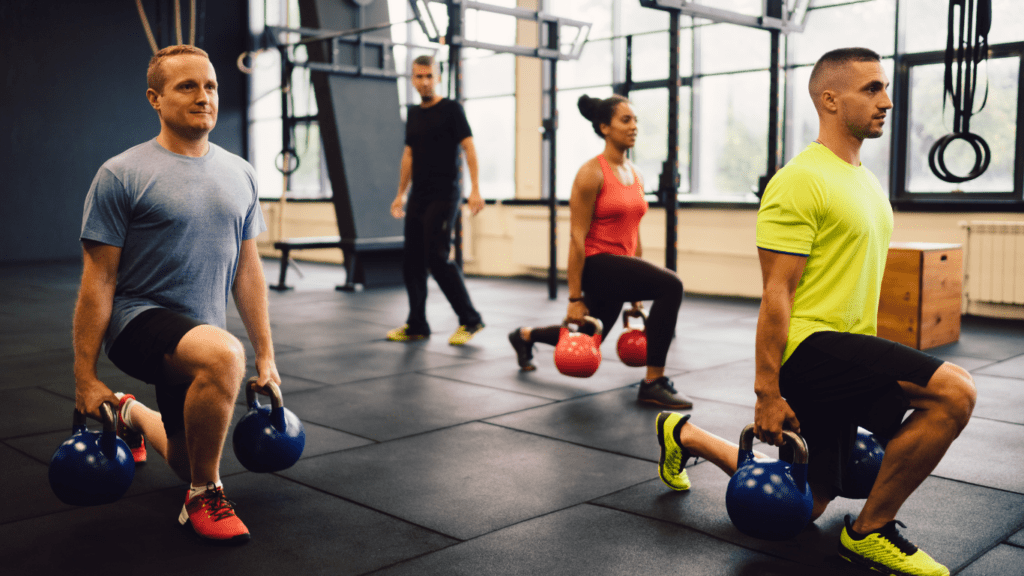When it comes to achieving peak performance, random workouts won’t cut it. I’ve learned that success in training isn’t just about working harder—it’s about working smarter. That’s where periodization comes in. This powerful strategy breaks your training into structured cycles, each with a specific focus, helping you avoid burnout and plateaus while steadily progressing toward your goals.
Periodization isn’t just for elite athletes; it’s a game-changer for anyone looking to maximize results. Whether you’re building strength, improving endurance, or preparing for a big event, this method ensures your body gets the right mix of stress and recovery at the right time. It’s like having a roadmap to your fitness success, guiding you step by step.
Understanding Periodization
Periodization is a systematic approach to training that ensures structured progression toward specific performance goals. By dividing training into distinct cycles, I can target different fitness components effectively.
What Is Periodization?
Periodization involves organizing training into phases, known as macrocycles, mesocycles, and microcycles. A macrocycle spans several months to a year, focusing on long-term objectives like marathon preparation. Mesocycles, lasting a few weeks, address intermediate goals such as strength development. Microcycles, typically weeks or days, provide short-term adjustments for recovery or performance peaking. Each phase builds on the previous one to prevent stagnation and encourage continuous improvement.
The Importance of Structured Training
Structured training maximizes results by aligning workouts with specific goals over time. Without structure, training often leads to overtraining, burnout, and plateaus. Periodization provides a roadmap to balance intensity and recovery, ensuring optimal performance. For example, alternating high-intensity weeks with recovery-focused weeks maintains physical and mental readiness. Structured planning also helps me adjust for milestones, like competitions or personal benchmarks.
Key Components Of Periodization

Periodization relies on specific structural elements to create effective training cycles. These components ensure each phase progresses smoothly, targeting short- and long-term goals while supporting recovery and growth.
Macrocycles, Mesocycles, and Microcycles
I structure periodization into three interrelated cycles: macrocycles, mesocycles, and microcycles.
- The macrocycle represents the longest timeframe, ranging from six months to a year, and aligns with overarching goals like preparing for a major event or achieving specific performance outcomes. It helps provide a clear roadmap for the entire training period.
- The mesocycle spans three to six weeks and serves as the intermediate cycle. Each mesocycle focuses on a particular objective, such as improving strength, endurance, or speed. I coordinate mesocycles to align with the goals of the macrocycle, gradually increasing intensity or volume.
- The microcycle lasts one to two weeks and fine-tunes daily or weekly training plans. It balances workload, progression, and recovery, ensuring consistent adherence to the mesocycle’s focus. Examples include adjusting training variables like repetitions, rest periods, or session intensity.
Phases of Training: Preparation, Competition, and Recovery
Within each training cycle, I divide the process into preparation, competition, and recovery phases.
- The preparation phase establishes a foundation of fitness by targeting general physical conditioning, such as building aerobic capacity, muscular endurance, and mobility. The intensity is typically lower, with a focus on technique development.
- The competition phase emphasizes peak performance. I align this phase with specific events or time-bound goals, increasing intensity and reducing volume to prioritize quality over quantity. Tapering is a key strategy here, allowing physical and mental readiness for maximum output.
- The recovery phase promotes physiological restoration and stress relief. During this phase, I include active recovery methods like light exercise, stretching, or mobility work to reduce fatigue and injury risk. This period also helps refine strategies for the next macrocycle, ensuring continued progress.
Types Of Periodization Models
Periodization models are designed to tailor training adaptations and enhance performance. Each model suits different goals, fitness levels, and training demands.
Linear Periodization
Linear periodization follows a structured progression where training intensity increases while volume decreases over time. I organize this model into cycles that begin with high-repetition, low-intensity workouts and transition to low-repetition, high-intensity sessions. This approach is effective for beginners and those aiming for steady strength and performance gains. A typical cycle might start with 12-15 repetitions per set at 60% of an athlete’s maximum load, gradually advancing to 4-6 repetitions at 85-90% maximum load.
Undulating Periodization
Undulating periodization, also known as nonlinear periodization, alternates training intensity and volume more frequently, often on a weekly or daily basis. I apply this method to provide constant variation, reducing the risk of plateaus and maintaining motivation. For example, one day involves high-intensity, low-volume strength training, while another might include moderate-intensity, high-volume endurance work. This model supports experienced athletes seeking to optimize multiple fitness attributes simultaneously.
Block Periodization
Block periodization divides training into focused, sequential phases or “blocks,” each targeting specific physical adaptations. I structure these blocks into three phases:
- accumulation
- transmutation
- realization
Accumulation builds general fitness, transmutation enhances sport-specific skills, and realization peaks performance for competition. This method is highly effective for advanced athletes preparing for specific events. A three-week hypertrophy block with 8-12 reps might transition into a strength-focused block with 3-6 reps before moving into a week of tapering for optimal performance.
Benefits Of Periodization
Periodization optimizes training by structuring cycles that enhance performance, prevent overtraining, and ensure consistent growth. Its benefits extend across all fitness levels.
Enhanced Performance Outcomes
Periodization maximizes outcomes by aligning training intensity and volume with specific cycles. This structured approach builds a foundation during preparation, peaks performance in competition phases, and supports recovery post-training. For example, endurance athletes use it to progressively improve stamina, while strength athletes achieve consistent progression in lifting capacities.
Improved Recovery and Injury Prevention
Structured recovery phases within periodization reduce injury risks and promote physiological restoration. Regular adjustments in microcycles prevent overuse injuries by balancing workload and rest. For instance, athletes alternating high-intensity sessions with lighter recovery days experience reduced fatigue and better long-term resilience.
Balanced Progression in Training
Periodization prevents plateauing by systematically varying training cycles. It focuses on progressive overload while incorporating periods of reduced intensity. As a result, fitness gains become sustainable and well-rounded. For instance, alternating between strength, endurance, and flexibility improvements ensures comprehensive physical development.



 Injury Prevention & Recovery Specialist
Injury Prevention & Recovery Specialist
